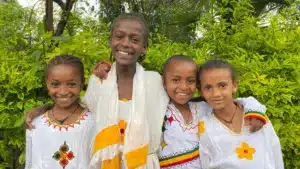
1. Why does adoption cost so much?
Adoption costs a lot because it’s a legal process involving dual government cooperation. Home studies, agency fees, and the legal documents required to make a child eligible for adoption are also part of the cost. Travel is also another factor for international adoption. The adopting family is typically required to travel once or twice to the adoptive child’s birth country during the adoption process, which adds to the expense.
2. Why does it take so long to adopt internationally?
It typically takes between one and four years to complete an international adoption. This process takes time for several reasons:
1. The documentation required for adoptive families and the home study process can be lengthy.
2. The child is also required to go through a process to ensure eligibility, such as the termination of parental rights.
3. The country’s government also has a role in approving a family to adopt and working with foreign governments can also add to the process as they typically are without as many resources.
4. The length of the waiting family list, and the family’s place on this list can also make the process longer. However, this does not mean that there is not a need! The process is just slow moving.
5. After a family has been matched and approved, the U.S. embassy then needs to issue a visa to the adoptive child and recognize the adoption. All of these factors can take awhile!
3. Is there help with adoption costs?
Yes! There are a lot of organizations that help with adoption and adoption related costs. There are so many wonderful resources for families adopting children with special needs or older children in particular. For the full list of AGCI’s recommend resources, check out our Additional Resources Page.
We also strongly encourage families to consider fundraising as a way to help with adoption costs. It’s a wonderful way to engage with your local community and allow others to contribute and be a part of your cause.
4. Am I eligible to adopt?
Each country has its own specific requirements regarding adoptive families. There are also requirements within the U.S. and AGCI. The three primary categories that affect eligibility are: medical, criminal and financial backgrounds. Once a family decides on the program or country that they’d like to adopt from, we can see if it’ll be a good fit or suggest other programs that might fit their circumstances.

The health of adoptive children ranges a lot. For example, our China adoption program is all special needs in some way. The special need could be very minor, or require surgery or ongoing care. We talk with each prospective adoptive family to see what they’re open to and go from there. The greatest need right now is for families willing to adopt a child with moderate special needs that might need an initial corrective surgery or ongoing care.
6.Where’s the greatest need for adoptive families?
We need families who are open to adopting children of all age ranges and mild to moderate special needs.
7. Why can’t I adopt a healthy infant internationally?
A lot of countries are beginning to understand the value of domestic adoption. This is a positive thing for children and families, but it’s also why toddlers are typically the youngest age available for international adoption.
8.Why should I choose AGCI?
We believe in offering families a really high level of support and provide information to prepare families for their adoption journey.
From a broader standpoint, we are a truly child centric organization. We have a holistic view of childcare that we bring into every country we work in. This means that when we train orphanage staff, we teach them how to care for children at the highest level. When we go into a country, we don’t just think about adoption; we think about what is the biggest need. For some communities, that’s not adoption, it’s orphan prevention or orphan care. We are sensitive to that and strive to do our best for children and their communities.
9. What’s the Hague Convention?
The Hague Convention is an international treaty that standardizes the adoption process. Many countries, including the United States, have signed this treaty. In addition to making the adoption process more transparent, it also involves the central authority more readily in the child placement process. It’s very costly for countries and agencies to become Hague compliant, which is why some countries choose not to comply. 
10. How do children transition into their adoptive families?
Each child is unique and so is each transition! AGCI works hard to prepare families so the transition home can go as smoothly as possible. There are sometimes initial challenges when families first meet their adoptive child. Sometimes those challenges also manifest several months later when the child begins to test boundaries. All of these reactions are normal and part of developing a trusting relationship. AGCI supports families throughout this process and connects them with other adoptive families for questions and support. We’re always here for you!
Ready to get started? Visit our How to Get Started page and begin your adoption journey today!













